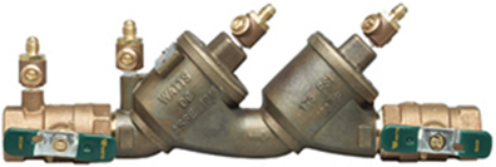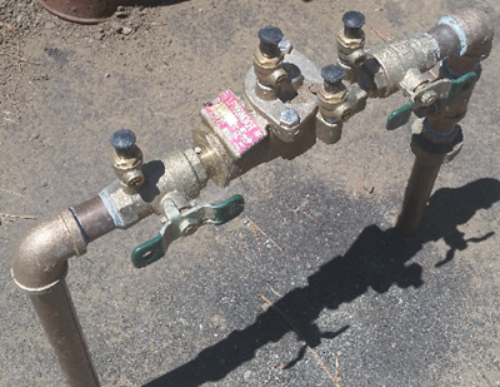- Local Government: e.g., city, county, or special district, local school district, junior colleges, county or community parks, etc.
- State or Federal Government: e.g., state or national park, BLM, USFS and COE campgrounds and recreation facilities, or District Fairs and Expositions, Caltrans rest stop, military base, other state or federal facility
- Privately owned, non-PUC-regulated (Community Water System): e.g., mobile home park, apartment or condominium
- Privately owned business (non-community): e.g., church, private school, restaurant, amusement park, RV park/campground, motel, ranch/farm, factory, other business establishment
- Local Government,
- State or Federal Government,
- Privately Owned, PUC Regulated, For Profit,
- Privately Owned, Non-PUC Regulated (Community Water System),
- Privately Owned, Mutual Water Company or Association, (6)
- Privately Owned, Business (non-community)
§64310. Reduction of Fees for Public Water Systems Serving Disadvantaged Community.
(a) A public water system must pay the full amount of the annual fee unless it requests and receives from the State Board a determination that its annual fees are reduced because it is a community water system that serves a disadvantaged community in which case the fee to be paid is the amount for a disadvantaged community as shown in Table 64305-A.
(b) To qualify for the reduction provided for in subsection (a), a public water system must certify, and provide documentation to the State Board upon request, that it serves a disadvantaged community.
| PHONE TYPE | DEFINITIONS |
|---|---|
| Business (For Administrative Contact only) | The BUSINESS phone type (mandatory) is treated as a public phone number and will appear in Drinking Water Watch (https://sdwis.waterboards.ca.gov/PDWW), which can be viewed by the public, if the General Office phone number is not provided. If you use your home or mobile phone number as your business number, it will be made public in DWW if there is no General Office phone. |
| Home (For Administrative Contact only) | The HOME phone type is treated as a private phone number, with the exception noted under Business Phone Type. |
NOTE: A person may be assigned multiple contact types. For example, the owner may also be both the Administrative Contact and Financial Contact.
POPULATION SERVED
CONNECTIONS
GROUNDWATER(GW) AND SURFACE WATER (SW) SOURCES
RECYCLED WATER
To serve plumbing outlets (excluding fire suppression systems) within a building, or Outdoor landscape irrigation at individual residences.
WATER QUALITY
CROSS-CONNECTION CONTROL. (Backflow)
 |
 |
| Fig. 1 - a double check valve assembly | Fig. 2 - a reduced pressure principle backflow prevention assembly |
OPERATOR CERTIFICATION
This shows the classification of your treatment facility with the highest classification (T1, T2, T3, T4, or T5). However, you may see the following instead:
- Treatment or Distribution Operator – your treatment facility or facilities may be operated by either a certified treatment or distribution operator
- Classification is Unavailable – the classification of your treatment facility or facilities has not been entered into the Division’s SDWIS database
-
No facilities subject to the Certified Treatment Plant Operator requirements – either you do not have any treatment facilities or these treatment facilities are not subject to the certified treatment plant operator requirements.
If you believe that your highest treatment facility classification is in error, please notify your local regulatory agency immediately.
This shows the classification of your distribution system (T1, T2, T3, T4, or T5). However, you may see the following instead:
- Distribution Operator Not Required – your water system is a transient non-community water system and as such is not subject to the certified distribution system operator requirements
-
Classification is Unavailable – the classification of your distribution system has not been entered into the Division’s SDWIS database
If you believe that your highest treatment facility classification is in error, please notify your local regulatory agency immediately. -
Tips to Complete the Operator Certification Tables
-
If you do not have any certified operators to report, put “NONE” in each column of the first row.
Name Grade of
OperatorChief or Shift1 (C, S or X) Operator
NumberExpiration Date NONE NONE NONE NONE NONE - - - - -
-
Use the following format and rules to complete the State certified Water Treatment Plant Operators table:
1Use “C” for Chief Operator and “S” for Shift Operator. If neither, put an "X". Do not leave blank.Treatment Operator Name Grade of
Treatment OperatorChief or Shift Treatment Operator
NumberTreatment Certification Expiration Date First name Last name 1, 2, 3, 4, or 5 only. C, S or X only (lowercase ok); do not leave blank. 4 or 5 digits MM/DD/YYYY - - - - -
-
Use the following format and rules to complete the State certified Water Distribution System Operators table:
1Use “C” for Chief Operator and “S” for Shift Operator. If neither, put an "X". Do not leave blank.Distribution Operator Name Grade of Distribution
OperatorChief or Shift1 Distribution Operator
NumberDistribution Certificate Expiration Date First name Last name 1, 2, 3, 4, or 5 only. C, S or X only (lowercase ok); do not leave blank. 4 or 5 digits MM/DD/YYYY - - - - -
- Comments: Comment boxes are provided throughout the eAR to allow the user to provide discussion or clarification on their responses provided in that section of the report. These comment boxes can accommodate up to 4000 characters.
- California Waterworks Standards (Section 64556) – when a permit is required for improvement or modification
California Waterworks Standards (see Sections 64570 through 64578) – when using alternative modification to requirements for extension or modification to existing distribution system.
- Comments:
comment boxes are provided throughout the eAR to allow the user to provide discussion or clarification on their responses provided in that section of the report. These comment boxes can accommodate up to 4000 characters.
- Pursuant to Record, Reporting and Recordkeeping. Section 64470 (a) Title 22 of the California Code of Regulations - all water supplier shall maintain records on all water quality and system outage complaints received, both verbal and written, and corrective action taken. These records shall be maintained for a period of five years for State Board review.
- Comments:Comment boxes are provided throughout the eAR to allow the user to provide discussion or clarification on their responses provided in that section of the report. These comment boxes can accommodate up to 4000 characters.
- GW Operations Plan A supplier shall operate each groundwater treatment plant in accordance with an operations plan that has been approved by the State Board. The operations plan shall be designed to produce the optimal water quality from the treatment process. The operations plan shall consist of a description of the utility's treatment plant performance monitoring program, unit process equipment maintenance program, operating personnel, including numbers of staff, certification levels and responsibilities; how and when each unit process is operated; laboratory procedures; procedures used to determine chemical dose rates; records; response to plant emergencies; and reliability features.
- Surface Water Treatment Pursuant to the Surface Water Treatment Rule, Section 64661, Title 22 of the California Code of Regulations: A supplier shall operate each surface water treatment plant in accordance with an operations plan that has been approved by the State Board. The operations plan shall be designed to produce the optimal water quality from the treatment process. The operations plan shall consist of a description of the utility's treatment plant performance monitoring program, unit process equipment maintenance program, filter media inspection program, operating personnel, including numbers of staff, certification levels and responsibilities; how and when each unit process is operated; laboratory procedures; procedures used to determine chemical dose rates; records; response to plant and watershed emergencies; and reliability features.
- Emergency Disinfection Plan *As required under Section 64660(c)(2). The EDP may be included in your water system’s Emergency Response Plan or Operations Plan. If so, provide the Name and Date of those plans below:. Pursuant to the Surface Water Treatment Rule, Section 64660(c)2, Title 22 of the California Code of Regulations: An emergency plan shall be developed prior to initiating operation of the disinfection facilities. The plan shall be implemented in the event of disinfection failure to prevent delivery to the distribution system of any undisinfected or inadequately disinfected water. The plan shall be posted in the treatment plant or other place readily accessible to the plant operator.
- Watershed Sanitary Survey Report Pursuant to the Surface Water Treatment Rule, Section 64665, Title 22 of the California Code of Regulations : ⁻ All suppliers shall have a sanitary survey of their watershed(s) completed at least every five years. The first survey shall be completed by January 1, 1996. ⁻ A report of the survey shall be submitted to the Department not later than 60 days following completion of the survey. ⁻ The survey and report shall include physical and hydrogeological description of the watershed, a summary of source water quality monitoring data, a description of activities and sources of contamination, a description of any significant changes that have occurred since the last survey which could affect the quality of the source water, a description of watershed control and management practices, an evaluation of the system's ability to meet requirements of this chapter, and recommendations for corrective actions
- Comments:Comment boxes are provided throughout the eAR to allow the user to provide discussion or clarification on their responses provided in that section of the report. These comment boxes can accommodate up to 4000 characters.
IMPROVEMENTS
TREATMENT
-
If you do not have any certified operators to report, put “NONE” in each column of the first row.